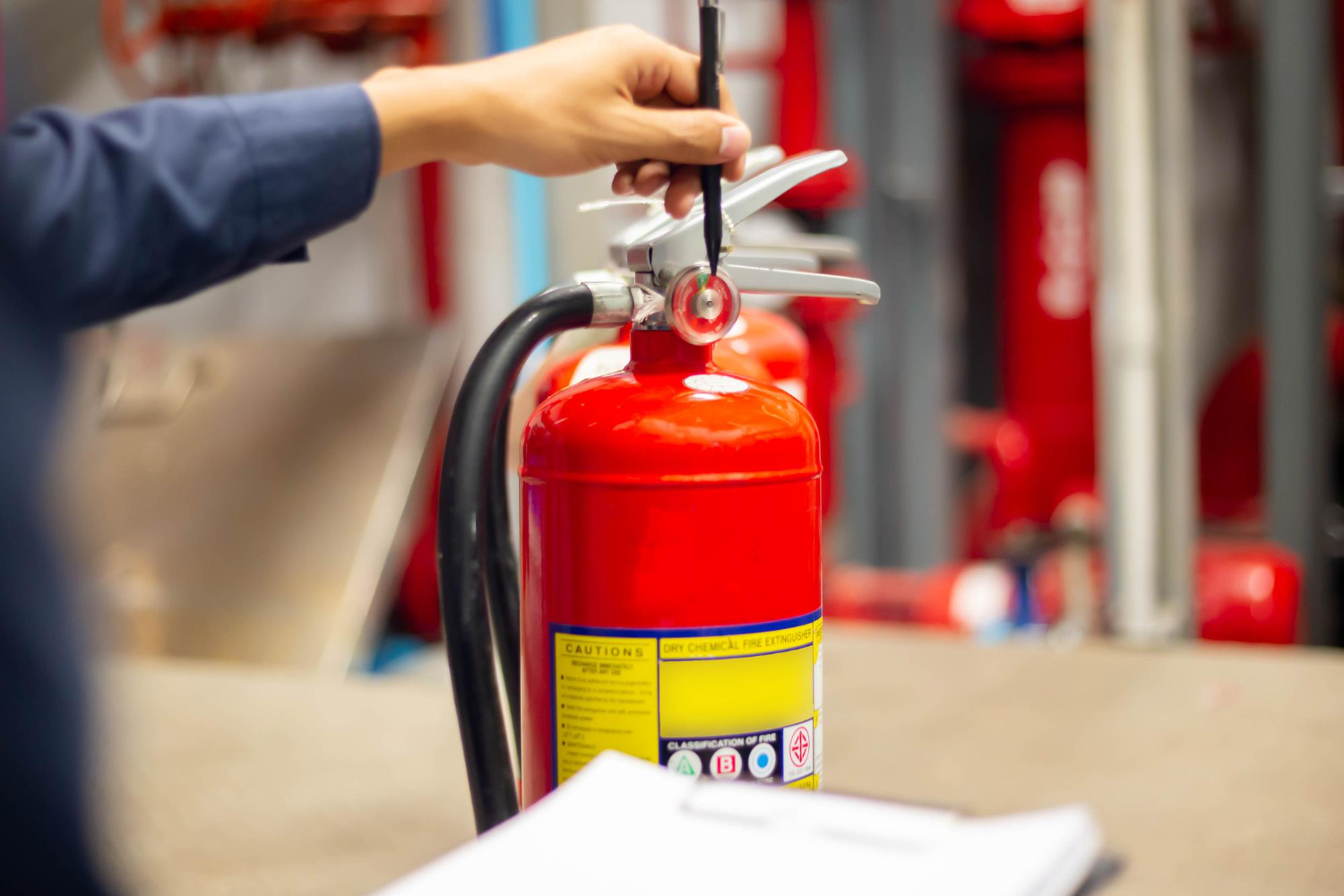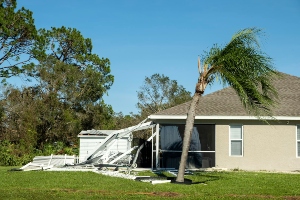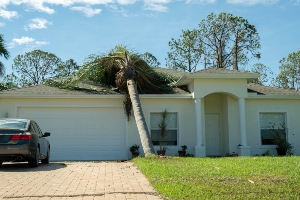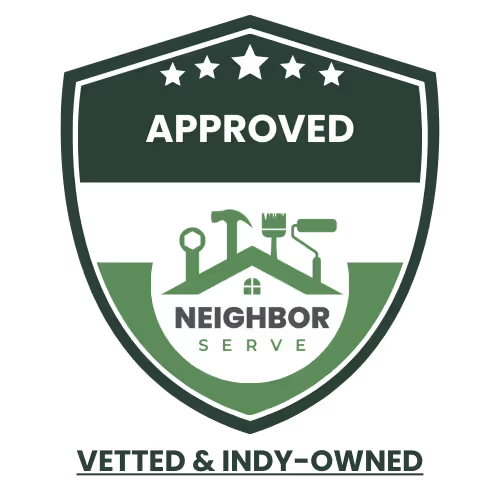A proper home fire safety inspection involves examining smoke alarms, escape routes, electrical systems, heating equipment, and having fire extinguishers in accessible locations.
Fires in homes happen more often than many of us realize. Every 24 seconds, a fire department in the United States responds to a fire, with over 350,000 house fires occurring each year, according to the NFPA. These fires cause thousands of deaths and billions in property damage that could often be prevented.
This simple process can identify hazards before they lead to tragedy. Taking just a few minutes to inspect your home could give you the crucial three minutes you need to escape safely if a fire occurs.
We recommend setting aside time to go through a complete fire safety checklist at least twice a year. By spotting potential fire hazards and taking simple precautions, you can significantly reduce the risk of fire in your home and keep your loved ones safe.
In this article, you’ll learn how a home fire safety inspection helps identify hidden risks and ensure your fire protection systems are working properly.
Here’s what you need to know:
- Why every home should have regular fire safety inspections
- What's included in a residential fire safety inspection
- How to prepare for a home fire inspection
- When to schedule a fire safety check (and who to call)
Keep reading! Prevention is always the best protection against the devastating effects of a house fire.
Why every home should have regular fire safety inspections
Regular fire safety inspections play a crucial role in protecting your family and home from potential fire hazards. These inspections identify risks before they become dangerous and ensure your safety measures function properly.
The U.S. Fire Administration reports that in 2023 there were approximately 344,600 residential building fires, highlighting the importance of regular home fire safety inspections to identify hazards before they turn into costly emergencies
House fires start faster than you think
Modern homes burn up to eight times faster than homes built 50 years ago, according to the NFPA. This is due to synthetic materials in furniture and open floor plans that allow fires to spread quickly. A small flame can engulf a room in less than 5 minutes.
Most fatal house fires happen at night when families are sleeping. Without working smoke alarms, you might have less than 2 minutes to escape safely once a fire starts.
The materials in your home matter too. Polyurethane foam in furniture can catch fire and release toxic smoke rapidly. Even electronic devices left charging overnight pose risks many homeowners overlook.
Regular inspections help identify these timing factors and ensure your family has an escape plan that accounts for how quickly fires spread.
Fire inspections help spot invisible risks
Many fire hazards remain hidden until professionals know where to look. Electrical issues behind walls, lint buildup in dryer vents, and improperly stored chemicals all pose serious risks.
Professional inspectors check areas homeowners often miss:
- Electrical panel overloading
- Frayed wires behind appliances
- Blocked ventilation systems
- Improper spacing of heating equipment
- Aging smoke detectors past their 10-year lifespan
Fire safety technology changes regularly. What was considered safe five years ago might not meet current standards. We've seen many homes with outdated smoke detector placement that leaves certain areas unprotected.
Inspectors can identify these invisible dangers before they cause problems. They also verify that your smoke and carbon monoxide detectors work properly and are installed in optimal locations.
Insurance and peace of mind: How inspections protect more than property
Many insurance companies offer discounts for homes that undergo regular fire safety inspections. These savings can offset inspection costs while providing valuable protection.
Documentation from professional inspections serves as proof that you've taken responsible steps to prevent fires. This can streamline claims processes if a fire does occur.
Beyond financial benefits, knowing your home has been professionally assessed brings peace of mind. We find that families sleep better knowing potential hazards have been addressed.
Some insurers may even require inspections after certain home improvements or when purchasing older properties. Staying ahead of these requirements prevents insurance complications.
Regular inspections also help maintain property value. Potential buyers appreciate documentation showing a home has been well-maintained from a safety perspective.
What's included in a residential fire safety inspection
Fire safety inspections check several critical areas of your home to ensure they meet safety standards. These inspections focus on detection systems, electrical components, and emergency preparations to help prevent fires and ensure everyone can exit safely if one occurs.
Smoke detectors and CO alarms: Placement and testing
Smoke detectors are your first line of defense against fire dangers. Inspectors verify that you have working smoke alarms installed on every level of your home, inside each bedroom, and outside sleeping areas. They'll check that detectors are properly mounted on ceilings or high on walls.
According to a study published by the National Library of Medicine, homes with working smoke alarms have a 40–50% lower risk of fire-related death compared to those without, emphasizing the life-saving importance of routine smoke detector checkups during fire safety inspections
Testing is a crucial part of the inspection. Inspectors press the test button to confirm alarms produce a loud, audible alert. They also check manufacturing dates, as smoke detectors should be replaced every 10 years.
Carbon monoxide (CO) alarms receive similar attention. These must be installed near sleeping areas and on each floor. Inspectors ensure they're functioning correctly and positioned away from fuel-burning appliances to prevent false alarms.
Remember that batteries in both smoke and CO detectors need replacement at least annually, though some newer models come with 10-year sealed batteries.
Electrical panel, outlets, and overloaded circuits
Electrical issues cause approximately 51,000 home fires each year, according to Electrical Safety Foundation International. Inspectors examine your electrical panel for proper labeling and ensure circuit breakers operate correctly without signs of overheating.
They look for warning signs such as:
- Discolored outlets or switches
- Warm outlet covers
- Frequently tripping breakers
- Buzzing or crackling sounds
Overloaded circuits are a major concern. Inspectors count devices plugged into outlets and power strips to identify potential overloads. They'll advise against daisy-chaining power strips or using extension cords as permanent solutions.
The inspection includes checking that all outlets near water sources are GFCI-protected. These special outlets cut power when they detect a short circuit, preventing electrical shocks.
Fire extinguishers, exit routes, and home layout assessment
Every home should have at least one fire extinguisher, preferably on each floor. Inspectors verify they're properly charged, accessible, and appropriate for home use (typically ABC-rated for multiple fire types).
They'll check that pressure gauges show "fully charged" and that extinguishers haven't expired. Most need replacement or professional inspection every 5-12 years.
Exit routes receive careful attention. Every bedroom should have two ways out—typically a door and a window. Inspectors ensure windows open easily, aren't painted shut, and meet minimum size requirements for emergency escape.
The home layout assessment evaluates:
- Clear pathways to exits
- Doors that open easily without special knowledge
- Functional emergency lighting
- Family meeting point outside the home
Inspectors may also discuss your family's fire escape plan, recommending regular practice drills so everyone knows exactly what to do if a fire occurs.
How to prepare for a home fire inspection
Getting ready for a fire inspection helps ensure your home is safe and can prevent costly follow-up visits. A little preparation makes the process smoother and helps protect your family from fire dangers.
Simple steps to take before the inspector arrives
Start by checking that all smoke alarms are working properly. Press the test button on each device and replace any batteries that are weak. Make sure you have the right number of smoke detectors - one on each level and inside each bedroom.
Clear all exits and hallways of obstacles. The inspector will check that everyone can quickly exit your home during an emergency. Remove furniture, toys, or decorations blocking doorways or windows.
Check your fire extinguishers to ensure they're not expired and pressure gauges show they're charged. Place extinguishers in accessible locations, especially near the kitchen and garage.
Make sure your address numbers are clearly visible from the street. This helps emergency responders find your home quickly when seconds count.
Gather any previous inspection reports to show the inspector what issues were addressed since the last visit.
Common fire hazards to fix in advance
Inspect your electrical system for obvious problems. Look for frayed wires, overloaded outlets, and improper extension cord use. Extension cords should never run under rugs or be used as permanent wiring.
Clear the area around your furnace and water heater. Remove stored items, especially flammable materials, keeping at least 3 feet of clearance around these appliances.
Check your dryer vent for lint buildup, both inside the machine and in the exhaust duct. Lint is highly flammable and a leading cause of home fires.
Properly store flammable liquids like gasoline, paint thinners, and cleaning supplies. Keep them in approved containers away from heat sources and out of reach of children.
Trim trees and bushes away from your home, especially around chimneys. Create a 5-foot fire-resistant zone around your house by removing dead vegetation.
What to expect during and after the visit
The fire inspector will walk through your home checking for hazards. They'll examine smoke detectors, fire extinguishers, electrical systems, heating equipment, and exit pathways. Be prepared to provide access to all areas, including attics and crawl spaces.
The inspector will document any violations they find. Don't take criticism personally - their goal is to help make your home safer. Ask questions if you don't understand why something is considered a hazard.
After the inspection, you'll receive a report detailing any issues found. The report will include deadlines for fixing problems. Some minor issues might need immediate attention, while others may have a 30-day compliance period.
If serious violations are found, a follow-up inspection will be scheduled. Make the required corrections promptly to avoid potential fines or other consequences.
When to schedule a fire safety check (and who to call)
Knowing when to schedule fire safety checks can make the difference between safety and disaster. Fire departments respond to a home fire every 24 seconds in the United States, with over 350,000 residential fires occurring annually, according to the NFPA.
Ideal Timing: Seasonal changes and after renovations
Schedule comprehensive fire safety checks during seasonal transitions, especially before winter when heating systems are used more frequently. Fall is ideal for checking furnaces, fireplaces, and space heaters before they become regular fixtures in your home.
After home renovations or electrical work, a safety check is essential. New construction can impact existing fire safety systems or create unforeseen hazards.
When you move into a new home, conduct a thorough inspection immediately. Don't assume the previous owners maintained proper fire safety standards.
Major life changes, like having a baby or an elderly family member move in, should trigger a review of your fire safety measures to accommodate their specific needs.
How often to test alarms and review emergency plans
Test smoke alarms monthly by pressing the test button to ensure they're functioning properly. Replace batteries at least once a year, or immediately when you hear the low-battery chirp.
Carbon monoxide detectors should follow the same monthly testing schedule as smoke alarms. These silent protectors need regular attention to remain effective.
Review your family's emergency escape plan quarterly. This includes practicing exit routes and meeting points outside your home.
Check fire extinguishers monthly for proper pressure (gauge in the green zone) and inspect them for damage or corrosion. Most extinguishers need professional inspection annually.
When to involve certified professionals or your local fire department
Contact certified fire safety professionals for annual inspections of your home's fire prevention systems. They can spot issues you might miss and ensure everything meets current safety codes.
Many local fire departments offer free home safety inspections. Take advantage of this service to get expert advice tailored to your specific home layout.
Professional inspections are crucial after experiencing a small fire or electrical incident. Even minor events can damage safety systems in ways not visible to untrained eyes.
If your home has specialized systems like sprinklers or hardwired alarm networks, these should be inspected by professionals every 6-12 months to ensure proper functionality.
Don't wait until there's a problem. Regular professional assessments provide peace of mind and help protect what matters most.
Conclusion
Making your home fire-safe is an ongoing process that requires attention and regular checks. By following the safety tips we've outlined, you can significantly reduce the risk of fire in your home.
Installing smoke alarms, creating escape plans, and keeping heat sources away from flammable objects are simple steps that save lives. Regular maintenance of electrical systems and heating equipment is equally important.
Home fire safety visits from your local fire department can provide personalized recommendations for your specific living situation. These professionals can spot hazards you might miss.
Remember that fire safety is about both prevention and preparation. The small steps you take today could protect your family tomorrow.
We encourage you to schedule a fire safety check soon if you haven't had one recently. The peace of mind that comes from knowing your home is protected is invaluable.
By staying vigilant and maintaining good fire safety habits, we create safer homes and communities for everyone.
Schedule a professional fire safety inspection to make sure your smoke detectors, extinguishers, and escape plans are ready when you need them most.




.avif)

